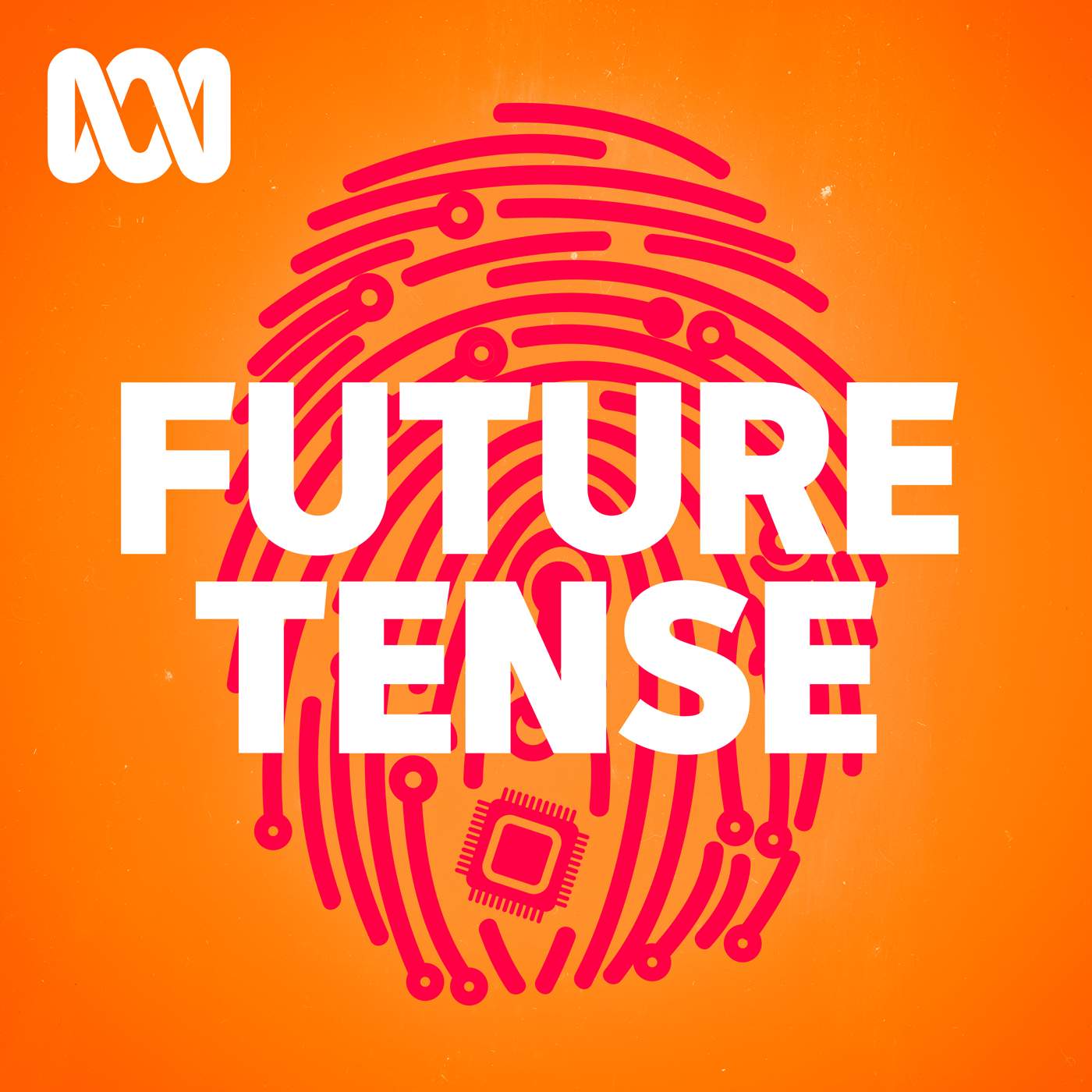
Heliox: Where Evidence Meets Empathy 🇨🇦
Join our hosts as they break down complex data into understandable insights, providing you with the knowledge to navigate our rapidly changing world. Tune in for a thoughtful, evidence-based discussion that bridges expert analysis with real-world implications, an SCZoomers Podcast
Independent, moderated, timely, deep, gentle, clinical, global, and community conversations about things that matter. Breathe Easy, we go deep and lightly surface the big ideas.
Curated, independent, moderated, timely, deep, gentle, evidenced-based, clinical & community information regarding COVID-19. Since 2017, it has focused on Covid since Feb 2020, with Multiple Stores per day, hence a sizeable searchable base of stories to date. More than 4000 stories on COVID-19 alone. Hundreds of stories on Climate Change.
Zoomers of the Sunshine Coast is a news organization with the advantages of deeply rooted connections within our local community, combined with a provincial, national and global following and exposure. In written form, audio, and video, we provide evidence-based and referenced stories interspersed with curated commentary, satire and humour. We reference where our stories come from and who wrote, published, and even inspired them. Using a social media platform means we have a much higher degree of interaction with our readers than conventional media and provides a significant amplification effect, positively. We expect the same courtesy of other media referencing our stories.
Heliox: Where Evidence Meets Empathy 🇨🇦
Our Oceans: The Fight for The Last Frontier
Picture this: a wilderness so vast it covers nearly half the planet's surface, teeming with life that literally keeps our climate stable, yet completely lawless. No rules, no protection, no oversight. Just a free-for-all where the biggest players strip-mine the ecosystem while taxpayers foot the bill.
Welcome to the high seas—and yes, it's exactly as dystopian as it sounds.
But here's the thing that should make you sit up and pay attention: after decades of this aquatic anarchy, we're suddenly on the verge of something that looked impossible just a few years ago. ... continue reading the article
This is Heliox: Where Evidence Meets Empathy
Independent, moderated, timely, deep, gentle, clinical, global, and community conversations about things that matter. Breathe Easy, we go deep and lightly surface the big ideas.
Thanks for listening today!
Four recurring narratives underlie every episode: boundary dissolution, adaptive complexity, embodied knowledge, and quantum-like uncertainty. These aren’t just philosophical musings but frameworks for understanding our modern world.
We hope you continue exploring our other podcasts, responding to the content, and checking out our related articles on the Heliox Podcast on Substack.
About SCZoomers:
https://www.facebook.com/groups/1632045180447285
https://x.com/SCZoomers
https://mstdn.ca/@SCZoomers
https://bsky.app/profile/safety.bsky.app
Spoken word, short and sweet, with rhythm and a catchy beat.
http://tinyurl.com/stonefolksongs
Curated, independent, moderated, timely, deep, gentle, evidenced-based, clinical & community information regarding COVID-19. Since 2017, it has focused on Covid since Feb 2020, with Multiple Stores per day, hence a large searchable base of stories to date. More than 4000 stories on COVID-19 alone. Hundreds of stories on Climate Change.
Zoomers of the Sunshine Coast is a news organization with the advantages of deeply rooted connections within our local community, combined with a provincial, national and global following and exposure. In written form, audio, and video, we provide evidence-based and referenced stories interspersed with curated commentary, satire and humour. We reference where our stories come from and who wrote, published, and even inspired them. Using a social media platform means we have a much higher degree of interaction with our readers than conventional media and provides a significant amplification effect, positively. We expect the same courtesy of other media referencing our stories.
This is Heliox, where evidence meets empathy. Independent, moderated, timely, deep, gentle, clinical, global, and community conversations about things that matter. Breathe easy. We go deep and lightly surface the big ideas. Okay, let's unpack this. Think about the biggest wilderness you can imagine, but it's not land. It's water. Just vast open ocean way beyond where any single country has control. We're talking about the high seas. It's huge, covers nearly two thirds of the ocean, almost half the planet's surface. And well, for ages, there haven't really been many rules out there. But now, things are suddenly moving really fast. There's this big international agreement, the High Seas Treaty, gaining a lot of momentum. So today we're diving into the sources you sent over news reports and research commentary to really get a handle on what this treaty is all about. Why is it needed now? How's it supposed to work? And, you know, where are we in terms of making it actually happen? Plus, what are the different angles people are taking on protecting this massive part of our world? Ready to jump in. OK, so first up, what exactly are the high C's? The official term is areas beyond national jurisdiction, right? That's it. A, B, and J for short. And the scale, like you said, is just immense. Yeah, the numbers are staggering. 61% of the ocean area, 43% of the Earth's surface. And get this, two-thirds of the entire biosphere by volume. It's almost hard to picture. It really is. And its importance isn't just about size. These areas are critical biodiversity hotspots. We're talking megafauna whales, turtles, big tuna, sharks. These animals migrate thousands of miles across these open waters. They don't see borders. Exactly. And their survival depends on the health of these high seas ecosystems. But maybe even more fundamentally, the high seas are absolutely crucial for Earth's life support systems. How so? Well, they play a massive role in regulating our climate, driving the water cycle, storing huge amounts of carbon and nutrients. It's deeply interconnected with the planet's health. Okay. The sources mention some specific things, these hidden processes, almost these pumps. Can you explain those a bit? Absolutely. So there's something called the biological pump. Think about the mesopelagic zone, that sort of twilight area, maybe 200 to 1,000 meters down. There are billions of tons of life down there, fish, squid, other organisms. And many of them do this daily migration. They swim up near the surface at night to feed. Right. And then they go back down deep during the day. And when they're down there, they, well, they excrete, releasing carbon-rich waste deep in the ocean. Huh. So they're basically taking carbon from the surface and locking it away deep down. Precisely. One source calculated that without this daily commute by all these creatures, atmospheric CO2 could be like 200 parts per million higher. And the planet potentially three degrees Celsius warmer than pre-industrial levels. Just from this constant cycling. That's incredible. And the other one, the nutrient pump. Right. So dead organisms sink, carry nutrients down. That's part of it. But also you have large animals. Think big guy tuna, sperm whales, leatherback curdles. They dive really deep to feed. Then they come back up towards the surface, and when they release waste products near the surface, they're effectively fertilizing the upper layers. They're pumping nutrients from the deep back up to where phytoplankton can use them. So they're boosting life at the surface, which then takes up more CO2. Exactly. It's this vital recycling system, powered in part by these amazing jeep diving animals. So it's clear these aren't just empty stretches of water. They're incredibly dynamic, essential systems. But despite all that, the sources paint a pretty worrying picture of the current situation out there. They really do. Because historically, it's been a bit of a free-for-all. No single comprehensive legal framework. One source quotes Greenpeace calling it the Wild West on the high seas. The Wild West. Yeah, that captures it. And even though these areas seem remote, they are under immense pressure. Overfishing is a huge one. Globally, sustainable fish stocks have plummeted from maybe 90% sustainable half a century ago down to only about 62% recently. And fishing has moved further out. Definitely. High seas fishing really intensified. One estimate suggests around 3,500 boats were operating out there back in 2018. And some of the methods, well, they're incredibly destructive. Like what? Long lining, for instance. These incredibly long lines with thousands of hooks. They catch target fish, sure, but also hundreds of thousands of seabirds, thousands of turtles, millions of sharks every year as bycatch. It's devastating. Millions of sharks. Wow. Then there's bottom trawling, which basically scrapes the seabed clean, and purse-sane fishing using these things called drifting fish aggregation devices, or DFADs. DFADs. What are those exactly? They're essentially floating objects, often rafts with netting, designed to attract fish like tuna. Makes them easier to catch in big nets. Okay. But the numbers are staggering. The sources mention upwards of 120,000 of these DFADs being deployed annually in recent years. They drift huge distances across maybe 37% of the ocean's surface. And what happens to them? Well, that's the thing. Up to 90% are apparently lost or just abandoned. So you've got tens of thousands of these plastic and metal contraptions just floating around out there, becoming marine debris, ghost fishing. It's a massive pollution problem on top of the fishing pressure. That is genuinely shocking. And there was something about the economics, too, that this fishing isn't even, like, self-sufficient. That's a key point in the sources, yeah. A lot of high-seas fishing is only profitable because of huge government subsidies. We're talking billions, like $4.2 billion in subsidies in 2014, supporting profits estimated between $3.8 and $5.6 billion. So taxpayers are funding potentially destructive fishing that might not otherwise happen. In many cases, yes. And it's actually a surprisingly small part of the global catch, less than 6%. And that catch mostly goes to wealthier nations. About 80% is landed by just six regions. Mainland, China, Taiwan, Japan, Indonesia, Spain, South Korea. And the human cost. The sources also mention grim realities there to low wages, poor conditions, and even reports of forced or slave labor and human rights abuses on some high seas fishing vessels. It's a complex issue with deep ethical problems. Okay, so overfishing, destructive practices, pollution from DFADs, questionable economics, human rights issues, what else? Climate change, of course, is hitting the high seas hard too. The ocean is warming, and it's losing oxygen. Globally, about 2% oxygen loss in the last 50, 60 years. What does that do? It basically shrinks the usable habitat for species that need a lot of oxygen, like tuna and sharks. It forces them into shallower waters, sometimes making them easier to catch, and it can slow their growth, make them smaller. We're also seeing these devastating global coral bleaching events. The fourth major one on record was just this past April 2024. And then there's the future threat, mining. Yes. There's a growing push towards deep sea mining for minerals on the seabed and also potentially fishing much deeper in that mesopelagic zone we talked about, maybe for fish meal or oil for aquaculture. All this, despite us having a pretty limited understanding of these deep ecosystems and the potential damage. So putting it all together, these vast vital areas are under attack from multiple angles and currently less than 1% is actually protected. That Wild West analogy feels spot on. It really does. And the sources are clear. Without concerted action, these crucial marine ecosystems face damage that could be irreversible for centuries, maybe even millennia. Okay, so that sets the stage perfectly for the solution presented in the sources, this high-seas treaty, the BBNJ Agreement Biodiversity Beyond National Jurisdiction. Exactly. And the big deal is that this is the first legally binding international agreement specifically designed to protect marine life out there in international waters. That's the core idea. It's meant to finally create that missing governance structure. It sets up a legal process for countries to work together to propose, evaluate, and establish marine protected areas, MPAs on a high seas. So not just individual countries acting alone, but a collective process. Precisely. It also includes rules for conducting environmental impact assessments before potentially harmful activities take place, like deep sea mining or maybe large scale geoengineering projects. Right. And it establishes frameworks for sharing benefits for marine genetic resources discovered out there, plus sharing technology and scientific knowledge between countries, particularly supporting developing nations. Decisions get made multilaterally through regular meetings called conferences of parties or COPs. And this seems absolutely critical for hitting that big global target, the 30 by 30 goal, protecting 30 percent of land and sea by 2030. It's essential. You simply can't get to 30 percent ocean protection without tackling the high seas. We need to protect almost four times more ocean area than we currently do, and that has to happen fast. This treaty is the main vehicle for doing that in international waters. So the treaty text exists, it was agreed upon, but an agreement on paper doesn't automatically change things on the water. What needs to happen next? Ratification. That's the crucial step. For the treaty to actually enter into force and become international law, 60 countries need to formally ratify it. That means going through their own domestic legal processes to officially sign up and agree to be bound by its rules. And this is where the recent news reflected in the sources gets really interesting. There's been a sudden surge. Yeah, that AP report from June 10th, 2025. It said that just the day before, 18 countries ratified all at once. That jumped the total up to 49 countries, plus the EU counts as one block. A huge leap. Which means they suddenly only need 11 more ratifications to hit that magic number of 60. And looking at the other sources really shows the acceleration. A Nature editorial from May 2025 said only 21 had ratified then. Another Nature piece from June 2025 mentioned 28 ratifications when it was published. So going from, say, 28 to 49 in just a short period, that's massive momentum. It really is remarkable. UN Secretary General Guterres apparently called the pace a record for this kind of treaty. He compared it to the Law of the Sea Convention, which took, what, 12 years to enter force? 12 years, right. So Guterres is saying entry into force for BB&J is within our sight now. And he's really pushing the remaining countries to ratify quickly, saying we do not have a moment to lose. OK, so let's say they get those final 11 ratifications. They hit 60. What happens on day 60? Do MPAs suddenly appear? Not quite that fast. Once the 60th country deposits its ratification documents, it triggers a 120-day countdown, four months. After that countdown ends, the treaty officially enters into force. Ah, okay. So four months later, it's live. Right. And that's when legal mechanisms unlock. Countries can then actually start formally proposing high-seas MPAs. The impact assessment rules kick in. The institutional bodies start forming. And a really crucial next step, which has to happen within one year of entry into force, is the very first conference of the parties, COPY1. COPY1. What's so important about that first meeting? That's where the foundational decisions get made. How exactly will the governance work? What are the specific rules for proposing and evaluating MPAs? How will the funding mechanisms operate? All these critical operational details get hammered out at COPY1. And there's a catch, isn't there, about who gets to decide? Yes, and it's a big one highlighted in the sources. Only the countries that have ratified the treaty by the time COP1 happens will be full parties with voting rights on those crucial initial decisions. OK, so there's a real incentive not just to be one of the first 60, but to ratify soon enough to actually shape the rules at that first meeting. Exactly. That explains the push from groups like the High Seas Alliance. They're celebrating the momentum towards 60, but they're also campaigning to go from 60 to global, urging universal ratification. Makes sense. Their director, Rebecca Hubbard, is quoted saying, you know, reaching 60 is an absolutely enormous achievement. But for the treaty to be truly effective, we need countries from all over the world to engage in its implementation. She really captured the excitement, saying we're on the brink of making high seas history. It does feel like a potentially historic moment. But the sources also caution that this treaty, as important as it is, exists in a wider, maybe messier context of ocean issues. That's right. It's a huge step, but not a magic bullet. One issue raised is compliance. Even with existing international agreements, getting countries to actually follow the rules consistently is a major challenge. Enforcement on the high seas is notoriously difficult. And funding. Always an issue. The sources mentioned a significant gap between ocean conservation funding pledges and what's actually delivered. Like only $23.8 billion delivered out of $160 billion pledged over a decade. And pledges have apparently been tapering off. So finding the resources to properly implement this ambitious treaty, fund the secretariat, support developing countries, that's going to be critical. So BBNJ is one piece, albeit a big one. What else is happening? The sources mentioned plastic. Yeah. There's the ongoing negotiation for a global plastics treaty. And the sources highlight a key division there. You have over 100 countries arguing we need to curb plastic production itself based on all the evidence of plastics choking marine life. But then you have oil and gas producing countries and some industry groups pushing back, arguing the focus should just be on improving waste management and recycling, not limiting production. Those talks are ongoing, with another round apparently scheduled for Geneva in August 2025. OK, so lots of moving parts. And one of the nature sources took a really radical stance, didn't it? Going beyond just managing the high seas. It did, yes. The Nature Comet piece makes a pretty bold argument. They propose permanently protecting all international waters, the entire high seas, from all forms of extraction. All extraction. So no fishing, no mining, no oil and gas at all. Forever. That's the proposal. Close the entire high seas to extractive industries. Wow. OK, what's their justification for such a drastic idea? Well, they build on the points we've discussed. They argue high seas fishing provides minimal global catch, is artificially propped up by subsidies, doesn't really help food security for vulnerable populations, disproportionately benefits a few wealthy nations, and is sometimes linked to those human rights abuses. So the economic and social arguments against it. Right. And then the benefits of closing it, they argue, would be huge. You'd save taxpayer money from subsidies. You'd prevent vast ecological damage. You'd allow fish stocks in the high seas to recover, which could then spill over and actually boost catches within national waters, where most countries, including developing ones, do their fishing. They see that as more equitable. And the ecological recovery. That's key. They argue a full closure would allow the whole high seas ecosystem, including that vital nutrient pump function, which they suggest has been weakened by centuries of exploitation to recover fully. This would boost the ocean's overall health, its ability to support life, and its role in regulating the global climate. So it's a vision of the high seas not as a resource to be managed for extraction, but as a globally vital ecosystem engine that needs full protection to function properly for the benefit of the entire planet. That's the essence of their argument, a fundamentally different approach. Okay. Well, we have certainly covered a lot of ground in this deep dive. From understanding just how vast and vital the high seas are, these incredible biological and nutrient pumps. to the really serious threats they're facing overfishing, climate change, pollution, potential mining. Right, that Wild West scenario. Exactly. And then the hope offered by the High Seas Treaty, the BBNJ, as this first real attempt at comprehensive governance. And the exciting momentum we're seeing right now with ratification, pushing towards that critical number 60. Absolutely. but also grappling with the bigger picture, the challenges of implementation, compliance, funding, and these other ongoing debates like plastics, alongside some really bold, maybe even radical ideas for the future, like that full closure proposal. It really highlights the tension, doesn't it, between using ocean resources and the urgent need for conservation, and just how complex it is to get global agreement and make it actually work on the water. It definitely underscores how crucial this moment is. Getting the BB&J treaty into force feels like a necessary first step, even with all the challenges ahead. So thinking about everything we discuss from these sources, the sheer importance of the high seas, the scale of the threats, the promise of this treaty, but also the hurdles of international cooperation and enforcement. Here's a final thought to leave you with. Given the urgency, especially with targets like 2030 looming, how can the global community truly make sure that the commitments made in treaties like BB&J translate into effective, timely action on the water? How do we ensure these promises are fully realized to safeguard this critical part of our planet before it's too late? Thanks for listening today. More recurring narratives underlie every episode. Boundary dissolution, adaptive complexity, embodied knowledge, and quantum-like uncertainty. These aren't just philosophical musings, but frameworks for understanding our modern world. We hope you continue exploring our other podcasts, responding to the content, and checking out our related articles at heliocspodcast.substack.com.



















